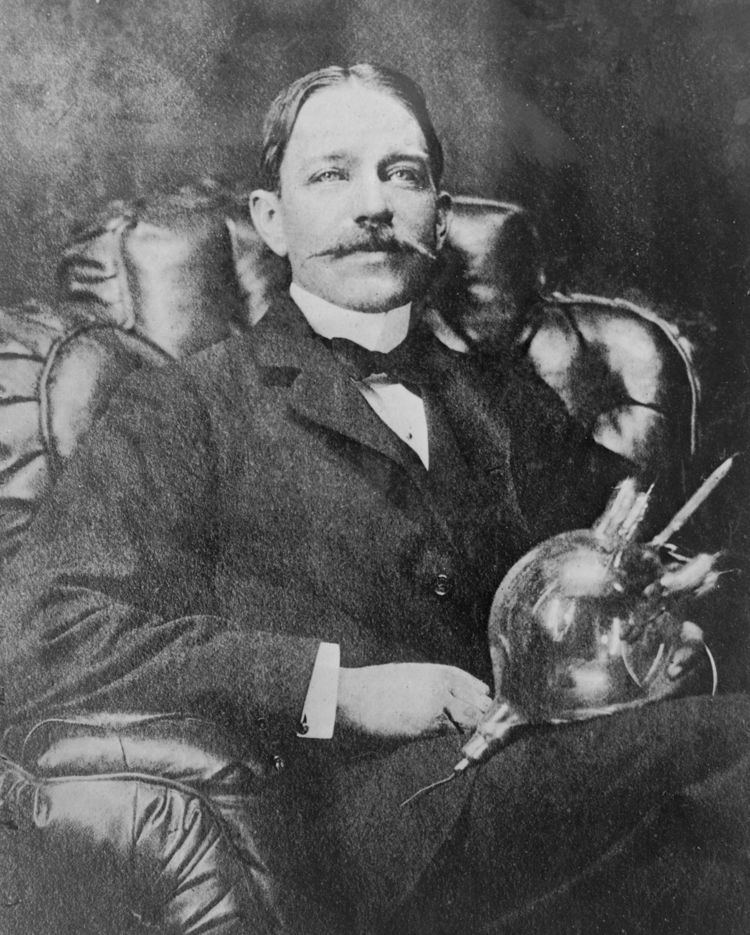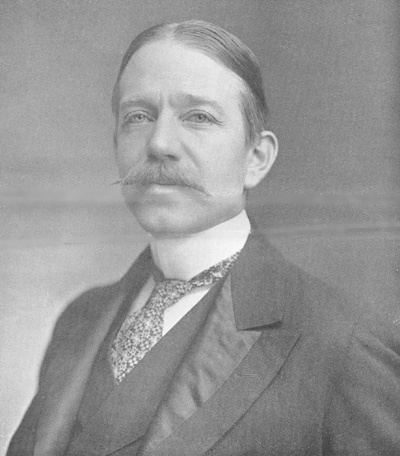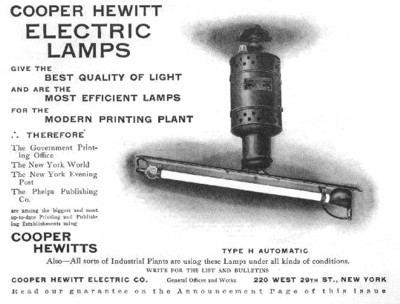Nationality American Ex-spouse Lucy Bond Work | Role Electrical engineer Name Peter Hewitt | |
 | ||
Born May 5, 1861New York City, New York, U.S. ( 1861-05-05 ) Parents Sarah Amelia Hewitt, Abram Hewitt Siblings Sarah Hewitt, Edward Ringwood Hewitt, Eleanor Hewitt, Amy Hewitt, Erskine Hewitt Education Columbia School of Engineering and Applied Science, Stevens Institute of Technology, Columbia University | ||
Grandparents John Hewitt, Ann Gurnee | ||
Really Cool 1904 Induction Lamps!
Peter Cooper Hewitt (May 5, 1861 – August 25, 1921) was an American electrical engineer and inventor, who invented the first mercury-vapor lamp in 1901. Hewitt was issued U.S. Patent 682,692 on September 17, 1901. In 1903, Hewitt created an improved version that possessed higher colour qualities which eventually found widespread industrial use.
Contents

Early life

Hewitt was born in New York City, the son of New York City Mayor Abram Hewitt and the grandson of industrialist Peter Cooper. He was educated at the Stevens Institute of Technology and the Columbia University School of Mines.
Career

In 1901 he invented and patented a mercury-vapor lamp; a gas-discharge lamp that used mercury vapor produced by passing current through liquid mercury. His first lamps had to be started by tilting the tube to make contact between the two electrodes and the liquid mercury; later he developed the inductive electrical ballast to start the tube. The efficiency was much higher than that of incandescent lamps, but the emitted light was of a bluish-green unpleasant color, which limited its practical use to specific professional areas, like photography, where the color was not an issue at a time where films were black and white. For space lighting use, the lamp was frequently augmented by a standard incandescent lamp. The two together provided a more acceptable color. Later. in the 1930s. a fluorescent coating (phosphor) was added to the inside of the tube at General Electric, which produced more pleasing white light when it absorbed the ultraviolet light from the mercury. This was the fluorescent lamp, which is now one of the most widely used lamps in the world.

In 1902 Hewitt developed the mercury arc rectifier, the first rectifier that could convert alternating current power to direct current without mechanical means. It was widely used in electric railways, industry, electroplating, and high-voltage direct current (HVDC) power transmission. Although it was largely replaced by power semiconductor devices in the 1970s and 1980s, it is still used in some high power applications. In 1903, the degree of Honorary Doctorate of Science was conferred upon him by the Columbia University in recognition of his work.
In 1907 he developed and tested an early hydrofoil. In 1916, Hewitt joined Elmer Sperry to develop the Hewitt-Sperry Automatic Airplane, one of the first successful precursors of the cruise missile.
